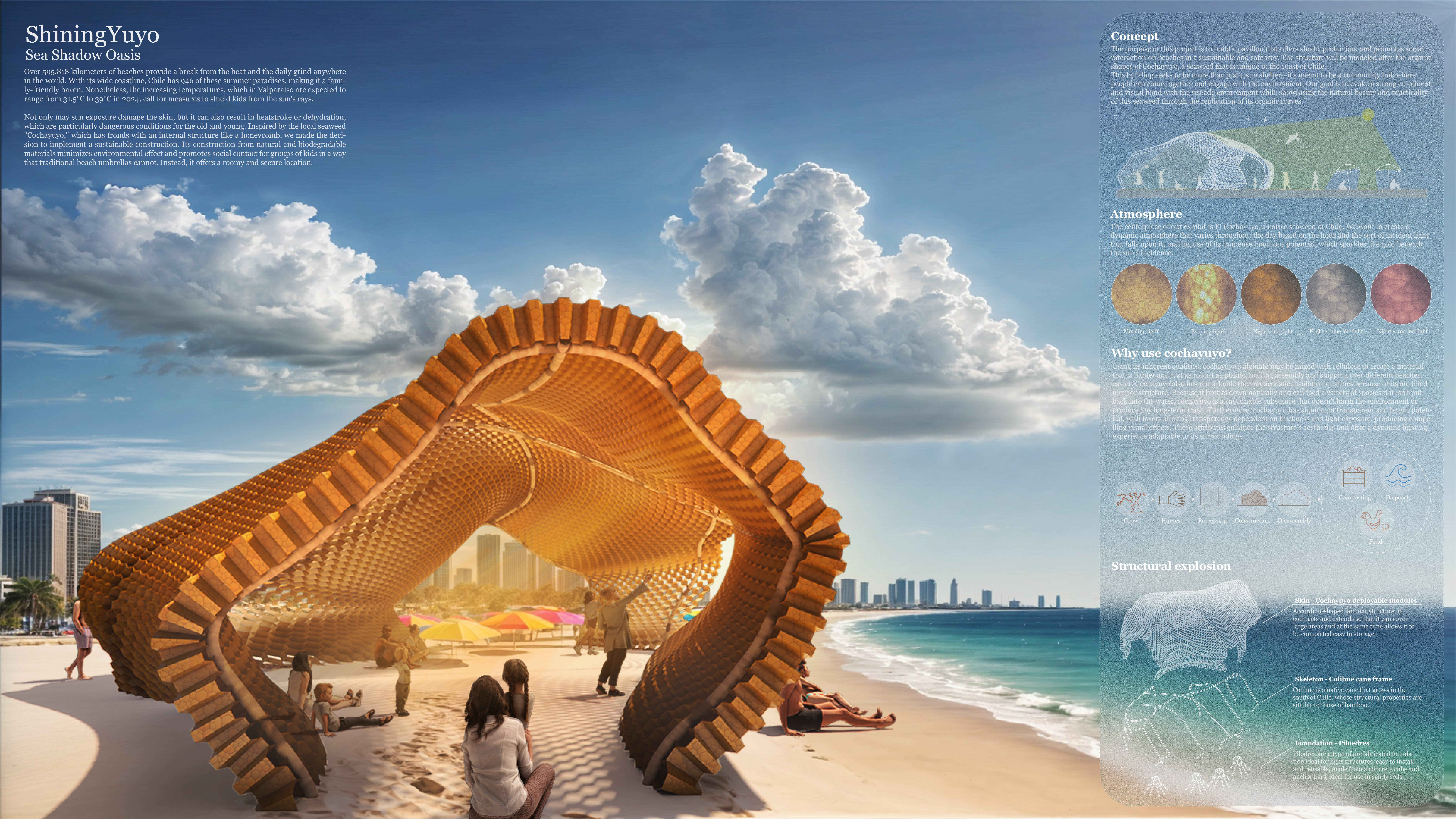2024 - Shining Yuyo

Category
Daylight Investigations - Region 3: The Americas
Students
Carlos Javier Alonso Vega Ortiz, Roberto Isaac Rodriguez Verdejo, Valentina Antonia Valenzuela Bustamante & Francisca Fernanda Romero Gaete
Teacher
Amaya Glaria Kahni
School
Universidad Técnica Federico Santa María
Country
Chile
Download
Download project board
Across the globe, over 370,000 miles of coastline offer a respite from the heat and daily grind. Chile’s vast coastline boasts 946 family havens, making it a true summer paradise. However, precautions must be taken to protect young ones from the sun’s UV rays, given the rising temperatures in Valparaíso, expected to reach 102°F in 2024, with a high of 107°F. Heat stroke, dehydration, and skin damage are particularly dangerous for the elderly and young children.
This raises the question: How can we maximize our enjoyment of the open, natural environment of the beach while being exposed to direct sunlight?
From this question arose the idea of creating a sustainable construction project using cochayuyo seaweed, which can accommodate a large number of people, provide shade, and create a dynamic and enjoyable experience.
Utilizing the inherent qualities of cochayuyo, an endemic seaweed of the Chilean coast with a honeycomb-like internal structure, it is mixed with cellulose to create a paper-like sheet with the robustness of plastic. This material is used to create deployable modules for constructing a large pavilion.
Traditional beach umbrellas often require more time and effort to erect, provide limited shade, offer little protection from the weather, and become less stable in windy conditions. In comparison, the cochayuyo pavilion offers notable advantages.
Due to its modular design, which simplifies installation and disassembly, it is more suitable for various beach locations. The vibrant hues and organic textures of the seaweed create a lively and welcoming atmosphere. The dynamic experience is enhanced by natural light permeating the structure, producing distinctive shadows and enhancing the pavilion’s aesthetic appeal. This not only attracts visitors but also demonstrates how the judicious use of local resources, cutting-edge design, and unconventional materials can work together to sustainably address contemporary issues.

























